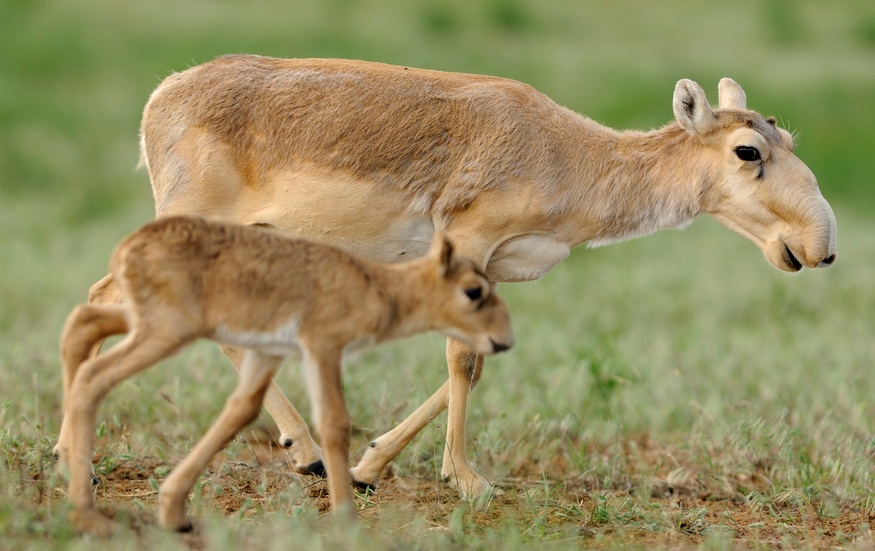The saiga (Saiga tatarica, order Artiodactyla) is a rare nomadic antelope species that inhabits the steppes, semiarid deserts, and plains of central Asia. Its most strikingly distinctive feature is its large humped nose or proboscis, which hangs down over its mouth. Formerly found across southeastern Europe and much of Asia, this creature is listed as critically endangered by the International Union for Conservation of Nature (IUCN). The saiga has faced tremendous reductions in its numbers from habitat loss, land degradation, and competition for grazing grounds, but also particularly from hunting. Traditional Chinese medicine enthusiasts highly prize the horns of the male antelope for their supposed medicinal qualities; consequently, reckless demand has extirpated the saiga population in China and neighboring countries. Today, saigas inhabit Kazakhstan predominantly, but there are also lesser populations in Kalmykia (southwestern Russia) and western Mongolia, as well as herds that migrate through areas of Uzbekistan and Turkmenistan. The saiga population totaled more than a million between the 1970s and the early 1990s, but at present it has been reduced to possibly only 50,000 individuals. This huge, rapid die-off puts these unique animals at risk for complete extinction. See also: Antelope; Artiodactyla; Asia; Ecology; Ecosystem; Endangered species; Extinction (biology); Population ecology

In the spring of 2015, and mostly over the course of just two weeks in May, approximately half of the world's saiga population was wiped out as the result of some unidentified disease. More than 210,000 saigas perished at this time, eliminating about 88% of the main population in Kazakhstan. The outbreak in 2015 followed similar die-offs that occurred in each of the years since 2010, although mortalities were previously much fewer. Investigators have been attempting to pinpoint the cause of these catastrophic incidents, with most scientists ascribing the massive die-offs to some combination of bacterial infection and other predisposing environmental factors (for example, colder winters and wetter springs resulting from climate change). Some leading possibilities include pasteurellosis, an infection that comprises a variety of diseases caused by the Pasteurella species, and conditions that include internal bleeding connected with toxins produced by Clostridium species. However, those bacterial species typically do not harm most saigas, so there must be additional triggers (likely environmental) that have aggressively weakened the immune systems of these animals. In most instances, the first animals to be affected and die are the females, which typically cluster in groups to calve their young. After the deaths of the adult females, the calves, which are too young to eat vegetation, succumb next. Still, the exact culprit remains a mystery, but one that needs to be solved quickly to ensure the viability of the species. See also: Climate modification; Clostridium; Environmental toxicology; Global climate change; Pasteurella; Pasteurellosis; Population viability; Virulence





